Bacho Kiro Cave: Early Homo Sapiens Groups In Europe Faced Subarctic Climates
Conny Waters - AncientPages.com - Using oxygen stable isotope analysis of tooth enamel from animals butchered by humans at the site of Bacho Kiro Cave, Bulgaria, Max Planck researchers show that human groups belonging to an early wave of dispersal of our species into Europe were faced with very cold climatic conditions while they occupied the cave between about 46,000 and 43,000 years ago.
Bacho Kiro cave - interior, Bulgaria. source
Archaeological remains at Bacho Kiro Cave currently represent the oldest known remnants of Upper Paleolithic Homo sapiens in Europe, and thus open a unique window into the time when our species started to move out of the Levant and establish itself across the mid-latitudes of Eurasia as part of an archaeological phenomenon called the Initial Upper Paleolithic.
The process how our species dispersed into new environments at that time represents an important evolutionary turning point that ultimately led to Homo sapiens populating all continents and a large diversity of climate zones and environments. The mechanisms that facilitated initial waves of the expansion remain debated, but a majority of models based on the correlation of archaeological sites with spatially distant climatic archives has so far indicated that human groups relied on warmer climatic conditions to spread into new, more northern, environments.
See also:
Bacho Kiro Cave: Genomes Of The Earliest Europeans – Sequenced
Using evidence directly from the archaeological layers of Bacho Kiro Cave the Max Planck team was now able to show that humans have been enduring very cold climatic conditions, similar to the ones typical for present-day northern Scandinavia, for several thousand years.
"Our evidence shows that these human groups were more flexible with regard to the environments they used and more adaptable to different climatic conditions than previously thought," says lead author Sarah Pederzani, a researcher at the Max Planck Institute for Evolutionary Anthropology and the University of Aberdeen.
Jean-Jacques Hublin, director of the Department of Human Evolution at the Max Planck Institute, adds: "Using these new insights, new models of the spread of our species across Eurasia will now need to be constructed, taking into account their higher degree of climatic flexibility."
Archaeological materials from Bacho Kiro Cave in Bulgaria
By directly using archaeological materials, such as the remains of herbivores butchered by humans, to generate climatic data the palaeoclimate research team—led by Pederzani and Kate Britton, also a researcher at Max Planck Institute for Evolutionary Anthropology and the University of Aberdeen—was able to establish a very robust record of local climatic conditions that specifically relates to the times when humans were inhabiting Bacho Kiro Cave.
"This technique enables a more confident assignment of local climatic context compared to the more commonly used chronological correlation between archaeological data and climatic archives from different localities that formed the basis of much of the existing research on human climatic adaptability—it really gives us insight into what life was like 'on the ground'", says Britton.
Current excavations at Bacho Kiro Cave of the 2021 season are unearthing new artifacts from the Middle Palaeolithic Neanderthal occupations. The Initial Upper Palaeolithic Layer I can be seen as a dark band in the sediment profile. Excavators are wearing masks and gloves to minimize contamination of samples that are regularly taken for molecular analyses. Credit: MPI-EVA/ Tsenka Tsanova
"However, due to the time-consuming nature of the analysis and the reliance on the availability of particular animal remains, oxygen isotope studies or other ways of generating climatic data directly from archaeological sites remain scarce for the time period when Homo sapiens first spread across Eurasia," adds Pederzani. Indeed, this Max Planck study is the first study conducted in the context of the Initial Upper Paleolithic and could therefore yield such surprising results.
Highly resolved record of past temperatures spanning more than 7,000 years
Pederzani spent one year conducting lab work from drilling series of small samples from the animal teeth through wet chemistry preparation and stable isotope ratio mass spectrometry to obtain all the necessary data.
"Through this time intensive analysis that included a total of 179 samples, it was possible to obtain a very highly resolved record of past temperatures, including summer, winter and mean annual temperature estimates for human occupations spanning more than 7,000 years," says Pederzani.
See also: More Archaeology News
Renewed excavations at Bacho Kiro Cave yielded a rich archaeological record of human activity at the cave including the remnants of occupations that represent the earliest known occurrence of Upper Paleolithic Homo sapiens in Europe. Deposits in the lower portion of the site contained a large number of animal bones, stone tools, pendants, and even human fossils and formed the basis of the climatic study to investigate the environmental conditions that humans experienced when they first spread into Southeast Europe from the Levant.
Source - Phys.org
Written by Conny Waters - AncientPages.com Staff Writer
More From Ancient Pages
-
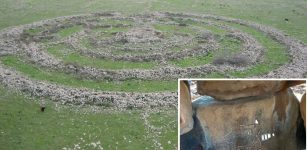 Unknown Lost Civilization Of Ancient Megalithic Super-Builders In The Middle East – Can Prehistoric Rock Art Solve The Mystery?
Featured Stories | Jul 13, 2020
Unknown Lost Civilization Of Ancient Megalithic Super-Builders In The Middle East – Can Prehistoric Rock Art Solve The Mystery?
Featured Stories | Jul 13, 2020 -
 Mystery Of The Gotland Grooves – Ancient Astronomical Observatory?
Civilizations | May 11, 2016
Mystery Of The Gotland Grooves – Ancient Astronomical Observatory?
Civilizations | May 11, 2016 -
 England’s Oldest Bible Reveals Surprising Hidden Secrets
Biblical Mysteries | Mar 19, 2016
England’s Oldest Bible Reveals Surprising Hidden Secrets
Biblical Mysteries | Mar 19, 2016 -
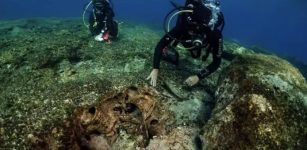 10 Ancient Shipwrecks And Several Underwater Artifacts Found Around The Island Of Kasos
Archaeology | Mar 14, 2024
10 Ancient Shipwrecks And Several Underwater Artifacts Found Around The Island Of Kasos
Archaeology | Mar 14, 2024 -
 A King’s Discovery Of A Mysterious Underground World
Featured Stories | Mar 30, 2024
A King’s Discovery Of A Mysterious Underground World
Featured Stories | Mar 30, 2024 -
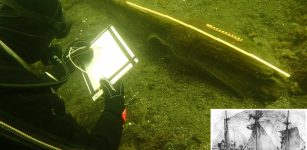 Danish Royal Sunken Ship Sheds Light On Psychological Warfare In The Middle Ages
Archaeology | Apr 3, 2017
Danish Royal Sunken Ship Sheds Light On Psychological Warfare In The Middle Ages
Archaeology | Apr 3, 2017 -
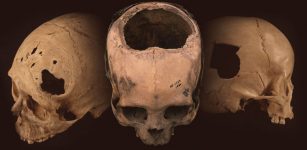 Ancient Peru’s Cranial Surgeons Had Remarkable Skills
Ancient Technology | Jun 8, 2018
Ancient Peru’s Cranial Surgeons Had Remarkable Skills
Ancient Technology | Jun 8, 2018 -
 Rare Discovery Of More Than 18,000 Inscribed Pot Sherds Document Life In Ancient Egypt
Archaeology | Jan 31, 2022
Rare Discovery Of More Than 18,000 Inscribed Pot Sherds Document Life In Ancient Egypt
Archaeology | Jan 31, 2022 -
 On This Day In History: Great Fire Of Rome Recorded – On July 18, 64 AD
News | Jul 18, 2016
On This Day In History: Great Fire Of Rome Recorded – On July 18, 64 AD
News | Jul 18, 2016 -
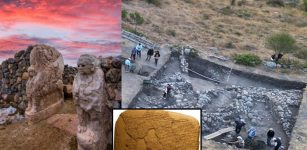 Cuneiform Tablet With New Indo-European Language Discovered In The Capital Of The Hittites
Archaeology | Sep 21, 2023
Cuneiform Tablet With New Indo-European Language Discovered In The Capital Of The Hittites
Archaeology | Sep 21, 2023 -
 Sacred Artifact With Mystical Powers – The Discovery – Part 2
Ancient Mysteries | Apr 26, 2019
Sacred Artifact With Mystical Powers – The Discovery – Part 2
Ancient Mysteries | Apr 26, 2019 -
 On This Day In History: Zhao Kuangyin Became Emperor Taizu Of Powerful Song Dynasty – On Feb 4, 960
News | Feb 4, 2017
On This Day In History: Zhao Kuangyin Became Emperor Taizu Of Powerful Song Dynasty – On Feb 4, 960
News | Feb 4, 2017 -
 Few Witches Were Executed In Wales In The Middle Ages – Why?
Featured Stories | Oct 29, 2024
Few Witches Were Executed In Wales In The Middle Ages – Why?
Featured Stories | Oct 29, 2024 -
 Scathach – The Shadowy One – Legendary Martial Arts Teacher Who Trained Cuchulainn And Other Warriors
Featured Stories | Mar 4, 2019
Scathach – The Shadowy One – Legendary Martial Arts Teacher Who Trained Cuchulainn And Other Warriors
Featured Stories | Mar 4, 2019 -
 Mystery Of The Proto-Elamite Tablets – Cracking The World’s Oldest Undeciphered Writing
Artifacts | Oct 29, 2012
Mystery Of The Proto-Elamite Tablets – Cracking The World’s Oldest Undeciphered Writing
Artifacts | Oct 29, 2012 -
 Secrets Of Hermes Trismegistus Who Brought Divine Wisdom To Mankind
Featured Stories | Feb 23, 2025
Secrets Of Hermes Trismegistus Who Brought Divine Wisdom To Mankind
Featured Stories | Feb 23, 2025 -
 Notre Dame Is On Fire! Can The Magnificent Cathedral Still Be Saved?
News | Apr 15, 2019
Notre Dame Is On Fire! Can The Magnificent Cathedral Still Be Saved?
News | Apr 15, 2019 -
 On This Day In History: Massacre In Great Temple Of The Aztec Capital Tenochtitlan – On May 20, 1520
News | May 20, 2016
On This Day In History: Massacre In Great Temple Of The Aztec Capital Tenochtitlan – On May 20, 1520
News | May 20, 2016 -
 Surprising End To Legend Of The Snallygaster That Terrorized Maryland And Washington
Featured Stories | Jun 1, 2020
Surprising End To Legend Of The Snallygaster That Terrorized Maryland And Washington
Featured Stories | Jun 1, 2020 -
 Ten Ancient Jugs And Shiloh May Reveal The Location Of The Biblical Tabernacle
Artifacts | Feb 6, 2019
Ten Ancient Jugs And Shiloh May Reveal The Location Of The Biblical Tabernacle
Artifacts | Feb 6, 2019


